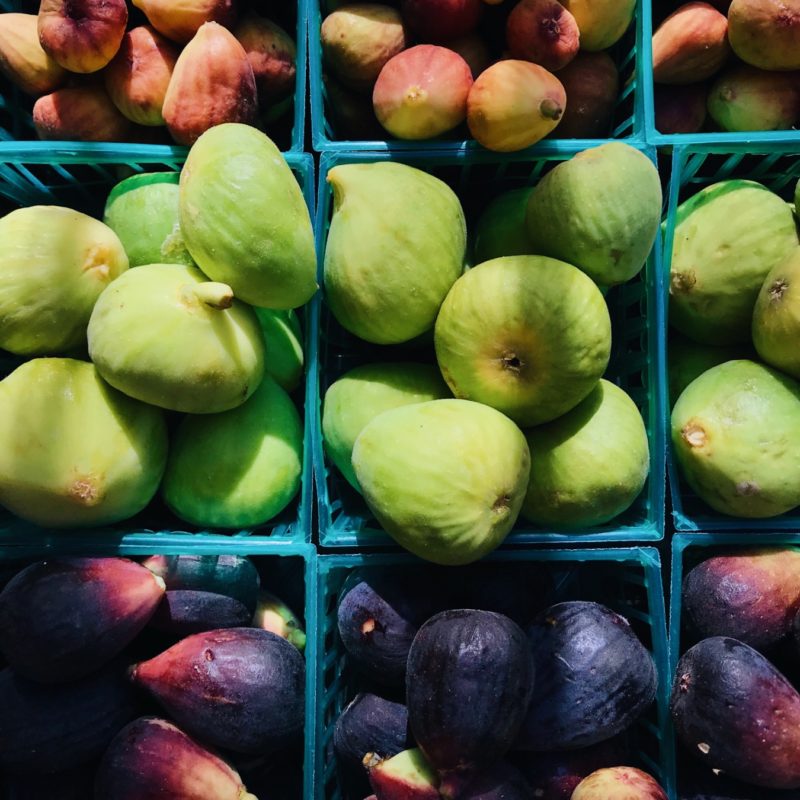Mission Garden Figs

Seasonal fruit from Mission Garden
Mission Garden is an urban garden that honors Tucson’s long agricultural history and features heirloom Sonoran Desert-adapted fruit trees. We began working with the folks there two years ago in an attempt to diversify our offerings and support more community producers. We’re happy to continue our partnership with Mission Garden by offering their seasonal fruit and sharing more about the Garden’s history and mission. This week we’re selling a variety of their Mission and Ruby figs in the CSA Shop. While this week’s offering will be first come, first serve, you can reserve a basket of figs for next week with our CSA Shop volunteer.
Fig (Ficus carica)
Spanish: Higo
O’odham: Su:na
Fig Cultivars in Mission Garden, propagated by the ASDM Kino Heritage Fruit Trees Project:
Sosa Carillo Black Mission Fig: Sourced from the historic Sosa Carillo house in Tucson’s Barrio Viejo. Leopoldo Carrillo’s descendants believe he acquired the cutting for that tree from the original Mission Garden during the 1880s. First crop, or breva, ripens in late May, early June. The second crop ripens in mid-July. Young plants are somewhat frost sensitive.
Ruby: “White” fig sourced from an old tree in the ghost mining town of Ruby, AZ. Starts ripening in June. Green skin and pink flesh. Less frost sensitive than Black Mission.
Oro Blanco: Sourced from Oro Blanco, a former mining town south of Ruby, AZ. First crop starts ripening in late May, second in early July. Less frost sensitive than Black Mission. Small fruits, when ripe, have pinkish to purple skin and pink flesh.
Quitobaquito: Originally sourced in the 1980s by Gary Nabhan and Wendy Hodgson from the last surviving trees of an orchard in the O’odham settlement of A’al Waipia, known as Quitobaquito Springs, and now part of Organ Pipe Cactus National Forest. Stock preserved and reproduced at Desert Botanical Garden, Phoenix.
Traditional local uses
Traditionally, figs are mostly eaten fresh or in jams and empanadas. Their skins can be eaten but the milky stems may cause skin irritation. Josefina Lizárraga uses leaves to make atole de higo, a sweet fig tea thickened with flour. Chinese gardeners also dried figs on screens to use later in teas and as a dried herb. Figs are common Tucson backyard trees, especially in older Mexican, O’odham, and Chinese households.